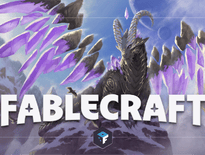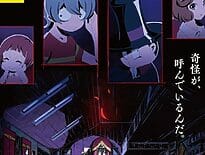I’ve written a lot of articles on games at this point.

I’ve inspected genres and looked at what variations you can make to the fabric in your gaming sessions. I’ve talked about gamifying and world building and pillars of play, immersion and legacy games and player experience. I’ve got so deep into ideas that I’ve gotten a little lost. I’ve called out the Dragon game a few times.
In all this time, I don’t think I’ve ever talked about getting started. I’ve always addressed this column to those in the know. I made no illusion that I was talking to people interested in making the experience of their game the best it could be and offering ways for them to think about the game.
So unless it was about a specific idea, I don’t think I’ve ever really discussed the way I build a campaign, specifically the start of one.
And obviously, a lot has been written on session zero at this point, including by me. Getting the pitch correct so everyone is on the same page is so important. But I’d like to take a moment to show that, assuming everything went right with your session zero, what I like to do over the first few sessions.
Long Game VS Immediate Game
I’m sure talking with other GMs you hear this bit of wisdom a lot. ‘I have the final scene in my head before the campaign is started. I know where we are going‘. The merits of this are debatable.

I think it’s important to have an idea of where the game is going at all times. You have to be prepared to ditch that idea because the game is going to go places you didn’t expect. It’s my opinion that if you have a cool idea for a scene, don’t wait around to use it at the end of your campaign; that’s sacrificing interest in your game in order to maintain some far-off element that might not happen.
Instead, fast forward to that moment. Put the cool bit at the end of the first arc. This first arc is about showing the players about the sort of game you want to run, and that game is going to be awesome. See what happens after that cool moment.
It’s a lesson I took a long time to understand. The players might be here to watch a long-term narrative unfold but really, they want to be able to look back at it having happened, not be waiting around.
So before you begin that first session, take four things you want the heroes to know about your campaign and make sure you get them early, build a social, combat or investigation event that includes these elements. This sets a tone for the game early on and doesn’t make them wait to be part of that world. Construct this first arc around the ideas you want to resonate.
Sit and watch the players and see which elements they like about the game. Sometimes one of the elements you planned on doesn’t fit. The players don’t like it or just seem to leave it be.

In my ‘Crone Kingdom Rebellion’ game start, I set the game in a fantasy blend of Appalachia and Lousiana and let the players explore the world while escorting an Elven girl and being heroes, defeating local horrors, uncovering ancient mysteries of the continent and trying to battle the plans of the Hag who ruled this nation. I quickly realised the parts of the game the players liked were the focus on the story and mission against the hags rather than detouring to do the ‘standard D&D sidequest’ stuff. It was, to them, a story of exploration and fighting against a specific foe through a set of goals rather than detouring through the nation and seeing it all. I quickly changed my game to make it so that the mission took place inside the interesting locals. It’s now become a story of the players’ journey and choices in focus. When and where they choose to stand and fight has become the interesting thing rather than the campaign assuming they will. The short game has fed into the long game.
Getting The Balance
I also try to keep in mind if a group are missing a skill set and early on introduce an NPC they can call on to help them fill that hole if needed. That NPC will often possess a personality archetype that helps gel a group together. If two members of a group are opposed in an area or idea, the NPC is likely to have moderate middle-ground views that will allow the characters to work toward compromise when they talk.
This NPC can be turned away, made to hate the group or whatever the players decide to do with them. The players have the agency here – having them arrive is the important thing. You made them an offering to make the game a little more fluid. What happens next is up to the players.

Foreshadowing
Now I know I told you to throw the cool idea at them. But you also want to show them there’s something worth playing for. So around the third or fourth session, just introduce something that hints at a bigger mystery or idea. You can inject it and then not use it again for ages. It might not lead anywhere – yet. But it’s there if the players choose to think about it, nothing to do with what they are dealing with. A side weirdness. You can then bring it back later.
It’s important here that you know what the weirdness is about but, as of yet, haven’t constructed a way for it to enter the story. You are just showing the players it is important, and the story has layers beyond the thrill ride they are on right now. Then just look for small places for it to keep coming up in the future. It’s a sort of promise to the players that even though you dropped some good ideas in this opening section, the next section will be pretty rocking too.
These are all elements I consider to be the most important part of a campaign to focus on. If you can get this section right, a game will start to be less work as the players understand the things the game is running towards and embrace those choices.
Click 'Create DTRPG Links' to turn the product titles above into searchable links for DriveThruRPG.


